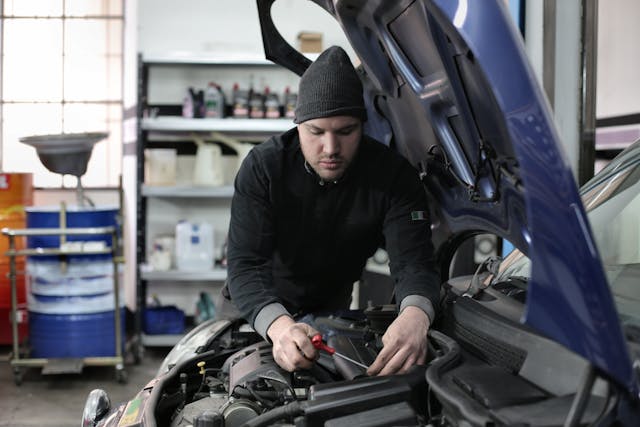Top 5 Signs Your Car Needs New Coolant
Your car’s cooling system is like the unsung hero of your vehicle. It works tirelessly behind the scenes, keeping your engine at a safe temperature and preventing overheating. But what happens when this critical component starts to fail? Recognizing the signs that you need new coolant can save you from costly repairs and keep your ride smooth. Whether you’re a seasoned driver or just getting started, it’s essential to stay alert for warning signals that could indicate trouble ahead. From unusual smells to strange sounds, understanding these clues can help ensure your car runs efficiently for years to come. Let’s dive into some telltale signs that it might be time to check on your coolant.
Overheating Engine
An overheating engine is one of the most obvious signs that your vehicle needs new coolant. When your car’s temperature gauge climbs higher than normal, it’s time to pay attention. Heat can build up for various reasons, but low coolant levels are often a key culprit. If there isn’t enough fluid circulating through the system, parts can heat up rapidly and lead to potential damage. Watch out for warning lights on your dashboard as well. Many modern cars come equipped with sensors that alert you when things aren’t running smoothly. Ignoring an overheating engine can have dire consequences.
Coolant Leaks
Coolant leaks can be a sneaky problem that many drivers overlook. If you notice spots of bright green, orange, or pink liquid under your car, it’s time to investigate further. These leaks often indicate a crack in the radiator, hoses, or even the water pump. Ignoring them can lead to serious engine overheating issues down the line. Regularly checking for puddles beneath your vehicle after parking is a simple yet effective habit. This quick inspection could save you from costly repairs. Additionally, pay attention to any changes in your car’s performance.

Low Coolant Level
A low coolant level can indicate a problem in your vehicle. It’s essential to check this regularly, especially before long trips or during seasonal changes. If you notice the coolant reservoir is below the recommended mark, it’s time to investigate further. A drop in coolant can lead to overheating and potential engine damage. Make sure you’re using the right type of coolant for your car model. Mixing different types may cause chemical reactions that reduce effectiveness. Keep an eye out for any signs of leaks while checking levels.
Sweet Smell
A sweet smell wafting from your engine can indicate a coolant leak. Often, this scent resembles that of syrup or candy. It’s a clear signal that something is amiss under the hood. When coolant escapes, it can create hot spots in the engine, leading to further issues if not addressed promptly. Ignoring this aroma could result in serious damage over time. If you catch a whiff of sweetness while driving or after stopping your vehicle, take immediate action. It’s wise to check for leaks around hoses and the radiator. Additionally, consider having a professional inspect your system.
Unpleasant Engine Sounds
Unpleasant engine sounds can be a telltale sign that your vehicle needs attention. If you hear gurgling or bubbling noises, it might indicate air trapped in the coolant system. This could lead to overheating if not addressed promptly. Additionally, grinding or knocking sounds may suggest issues with the water pump or other components related to cooling. These problems often arise when the coolant is low or contaminated. Whistling noises might come from leaks in hoses or connections. Such leaks can hinder proper circulation and reduce overall efficiency. Taking care of your vehicle’s cooling system is crucial for its overall health. Being aware of the signs that indicate a need for new coolant can save you from costly repairs and keep your engine running smoothly. Regular maintenance checks are essential to ensure everything functions as it should. Make sure to consult with a trusted mechanic if you notice any concerning signs or have questions about maintaining proper coolant levels. Keeping an eye on these indicators can lead to smoother drives and fewer surprises down the line. Your car deserves it.…
